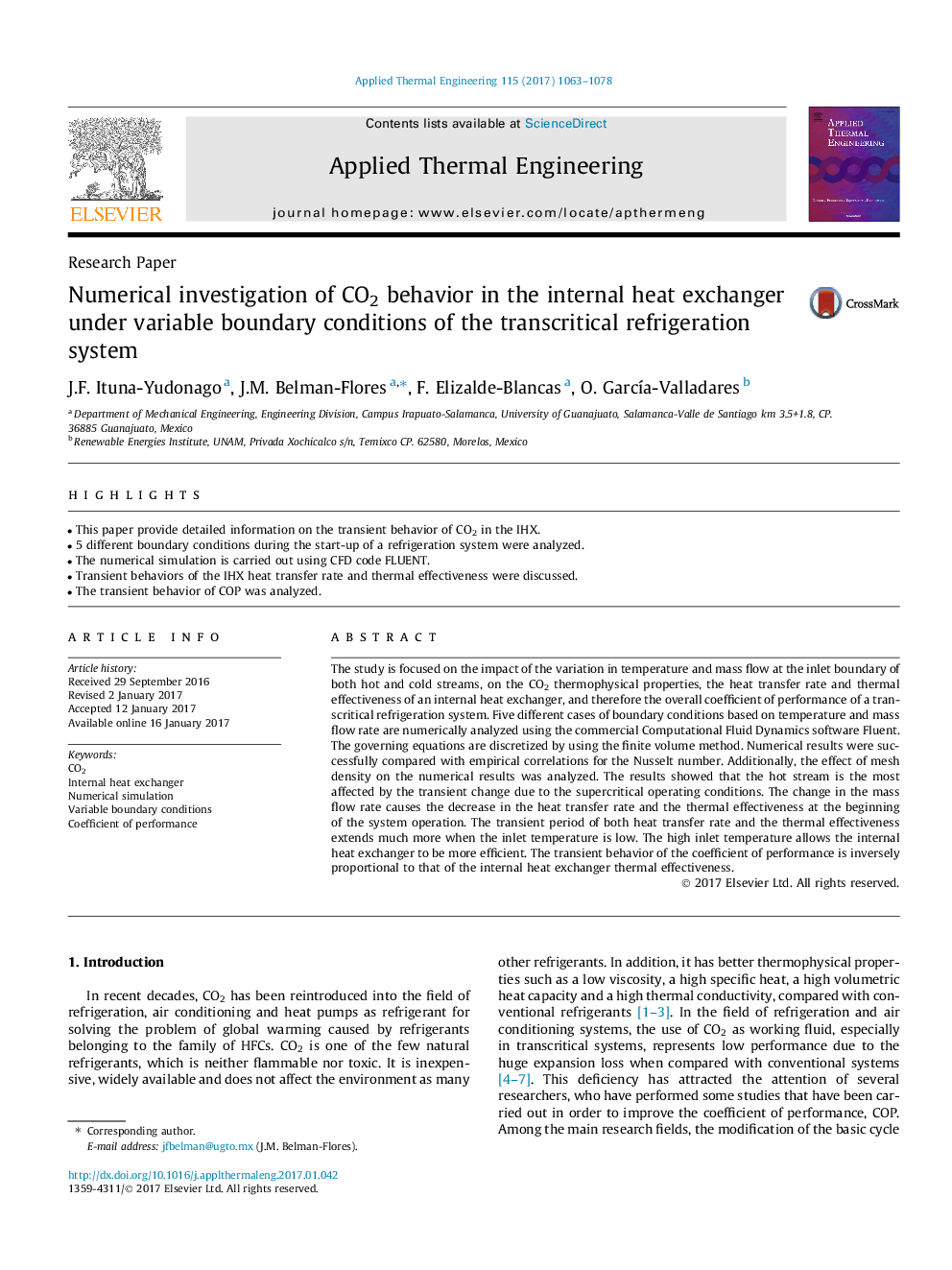| کد مقاله | کد نشریه | سال انتشار | مقاله انگلیسی | نسخه تمام متن |
|---|---|---|---|---|
| 4991668 | 1457114 | 2017 | 16 صفحه PDF | دانلود رایگان |

- This paper provide detailed information on the transient behavior of CO2 in the IHX.
- 5 different boundary conditions during the start-up of a refrigeration system were analyzed.
- The numerical simulation is carried out using CFD code FLUENT.
- Transient behaviors of the IHX heat transfer rate and thermal effectiveness were discussed.
- The transient behavior of COP was analyzed.
The study is focused on the impact of the variation in temperature and mass flow at the inlet boundary of both hot and cold streams, on the CO2 thermophysical properties, the heat transfer rate and thermal effectiveness of an internal heat exchanger, and therefore the overall coefficient of performance of a transcritical refrigeration system. Five different cases of boundary conditions based on temperature and mass flow rate are numerically analyzed using the commercial Computational Fluid Dynamics software Fluent. The governing equations are discretized by using the finite volume method. Numerical results were successfully compared with empirical correlations for the Nusselt number. Additionally, the effect of mesh density on the numerical results was analyzed. The results showed that the hot stream is the most affected by the transient change due to the supercritical operating conditions. The change in the mass flow rate causes the decrease in the heat transfer rate and the thermal effectiveness at the beginning of the system operation. The transient period of both heat transfer rate and the thermal effectiveness extends much more when the inlet temperature is low. The high inlet temperature allows the internal heat exchanger to be more efficient. The transient behavior of the coefficient of performance is inversely proportional to that of the internal heat exchanger thermal effectiveness.
Journal: Applied Thermal Engineering - Volume 115, 25 March 2017, Pages 1063-1078